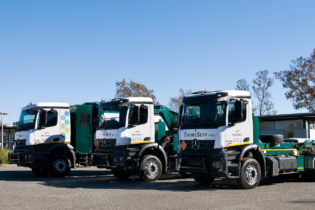Increasing the use of biofuels is the most cost-effective way for Finland to achieve the goals of the EU’s 2030 climate and energy framework.
VTT and the Government Institute for Economic Research (VATT) have completed a study commissioned by the Ministry of Employment and the Economy and the Ministry of the Environment, assessing the impact of the EU’s 2030 climate and energy framework on Finland’s energy system and national economy. The increased use of second-generation biofuels in road transport would provide Finland with the most cost-effective way of achieving the greenhouse gas emissions goals presented in the policy framework for the sector outside the emissions trading system (ETS). The impact on the national economy caused by the policy framework is estimated to remain moderate, although there are still uncertainties in the estimates.
In January 2014, the European Commission published a policy framework concerning the 2030 climate and energy policy goals, where a 40% reduction in greenhouse gas emissions, compared to 1990, is proposed for 2030. With regard to the EU ETS, the reduction goal is 43%,, and for sectors outside the emissions trading sectors it is 30%, from the 2005 level.
In the project implemented by VTT and VATT, the impact of the emission goals on Finland’s energy system and the national economy was assessed. In the project, calculations were made using three different scenarios, where Finland’s emission reduction goal was 32, 36 or 40% in the sectors outside the EU ETS, which include transport, building heating, waste treatment, agriculture, and some industries. In the emissions trade sector, the price of an emission right was assumed to rise to the level of €50/t CO2 due to the proposed EU policy. VTT made the calculations using the TIMES-VTT energy system model, where the greenhouse gas reduction measures are presented by sector.
Biofuels comprise up to 40% of transport
‘The largest emission reductions in the sectors outside the EU ETS can be achieved in the transport sector, by using second-generation biofuels that can be used in existing vehicle fleets. The share of biofuels in road transport would increase up to 40% in 2030. Cost optimisation in the different scenarios would require the reduction of emissions in all sectors outside the EU ETS, such as the residential and commercial sectors, waste treatment, industries excluded from the EU ETS and agriculture,’ says VTT’s leader of the research team, Tiina Koljonen.
‘Costs will rapidly increase if the emission goal is above 36% in sectors outside the EU ETS. This would require expensive investments to be made in Finland to reduce emissions. With regard to buildings, cost-effective investments will be a reality under the current policy, signifying a significant increase in the energy efficiency of buildings. In agriculture, the use of greenhouse gases can only be reduced by a small amount, mainly through decreased use of fertilisers,’ Koljonen says. ‘The sustainability criteria of biofuels and their actual production costs still include many uncertain factors that may have a significant effect on the different scenarios. According to initial estimates, refinery investments will require an investment subsidy of around €500 million. If production subsidies for second-generation biofuels are also required, the amount of subsidies required will increase to around €1 500 million cumulatively for the years 2020 to 2030.’
With regard to the EU ETS, Finland would be a net buyer of emission rights; furthermore, the proposed EU policy would increase the price of electricity and district heating compared to the baseline scenario, also taken into account in the calculations for the national economy.
Moderate impact on the national economy
The impact of the EU’s 2030 climate and energy framework on Finland’s national economy was assessed using the VATTAGE model for the macro economy developed by VATT, taking into account the results of the of the energy system modelling.
‘Generally speaking, the impact of the action package appears to remain moderate with regard to the national economy, if the goals set for Finland can be achieved primarily through the increased use of biofuels. Our calculations are based on the biofuels used being produced from domestic wood-based raw materials. The assumption was that biorefineries would increase Finland’s refinery capacity, which would open up possibilities for an increase in the export of refined petroleum products,’ says docent Juha Honkatukia, research director at VATT.
The proposed climate policy will increase pressure for an EU-level price increase, and it would reduce the purchasing power of households.
‘In the different scenarios, the purchasing power of households in Finland would reduce by around 0.3 to 1 per cent, and the trade balance would shrink by a couple of hundred million euros. In this scenario, employment would reduce by 0.1 to 0.4 per cent, depending on the development of real wages and the assumed emissions goal,’ Honkatukia says. ‘Finnish GDP would reduce by around 0.7 per cent at most.’
‘Finland has plenty of wood raw materials and top-level know-how for the production technologies of second-generation biofuels. The forest industry has already announced significant investments in next-generation pulp plants, into which the production of bio-refining products could also be integrated,’ Koljonen says. ‘We extensively utilised VTT’s knowledge in different fields in the project. The significance of research and development activities is central in combating global warming.’







